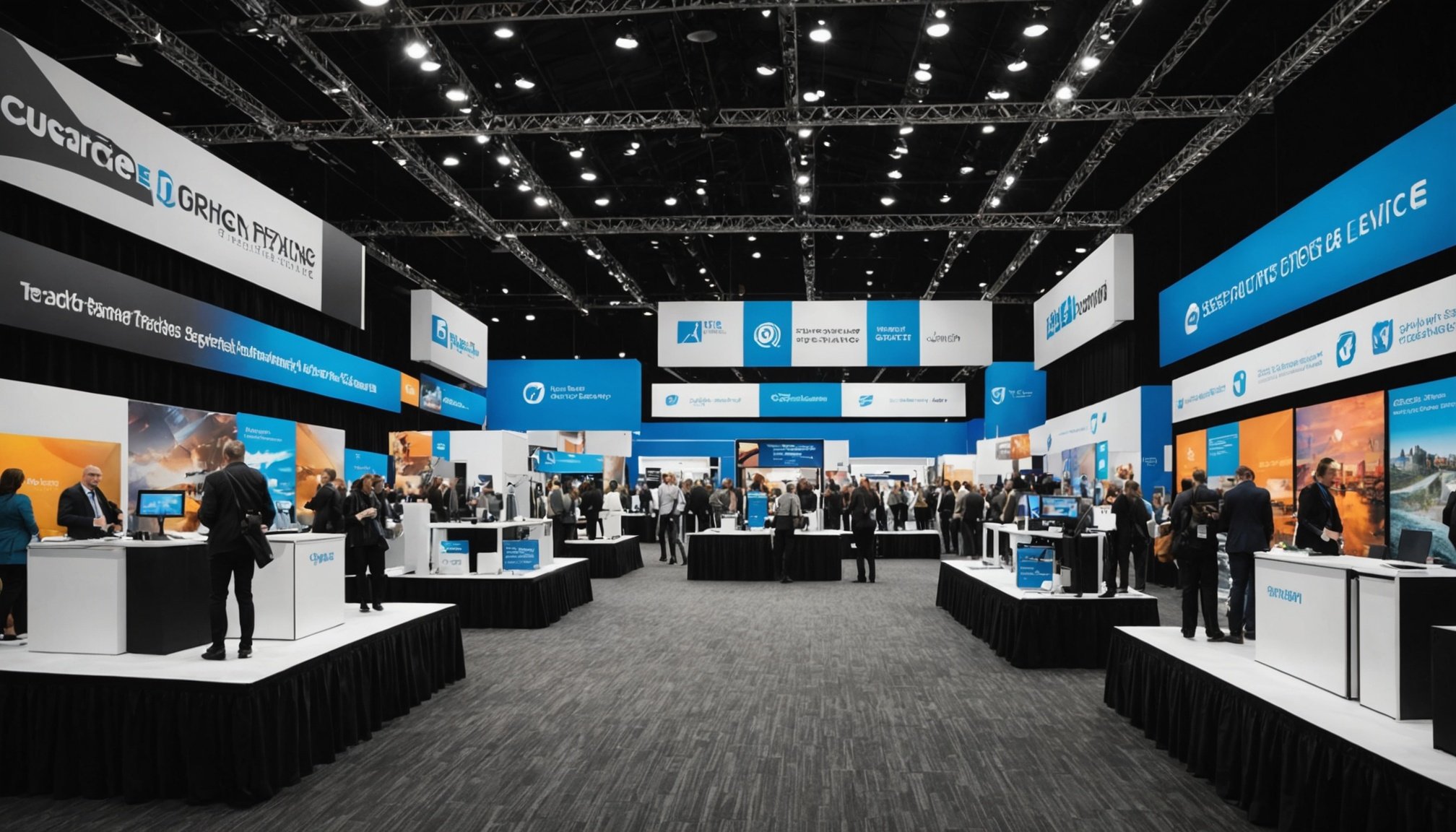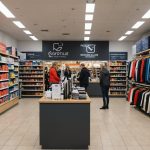Trade shows are evolving beyond simple booths into immersive experiences that captivate audiences. Effective staging transforms an event’s atmosphere, enhancing engagement through dynamic visuals, sound, and lighting. By integrating innovative strategies and creative branding, exhibitors can create memorable interactions that resonate with attendees. This exploration delves into techniques, vendor insights, and practical tips for making your trade show presence not just noticed, but unforgettable.
Transforming Trade Show Event Staging into Immersive Experiences
Achieving an unforgettable immersive experience at trade shows is a paramount goal, as it enriches audience engagement and elevates brand visibility. By implementing event staging using H.stories, organizers can craft compelling environments that captivate audiences and leave lasting impressions. The core elements involve integrating cutting-edge audio-visual solutions, which contribute significantly to enhancing attendee engagement through experiential marketing techniques.
Also to discover : Mastering Content Calendars: A Comprehensive Blueprint for Sheffield’s Marketing Agencies
Current trends include interactive exhibits and multi-sensory experiences, leveraging technology integration to transport visitors into brand narratives. This approach not only captures attention but also encourages networking, providing a platform for dynamic interaction and storytelling that resonates with attendees.
Successfully engaging audiences relies on strategic layouts and vibrant aesthetics, ensuring that every element works harmoniously to promote interaction. Creative booth design ideas should center around engaging storylines that align with brand values, incorporating visually dynamic setups that entice and sustain interest throughout the event.
Also to discover : Maximizing impact: horizon europe's transformative funding opportunities
By embracing innovative trade show displays, brands can distinguish themselves in crowded markets, thus maximizing exhibitor ROI. Employing powerful audience interaction tools and evaluating post-event feedback can further refine strategies, ensuring each show becomes a building block for future success.
Effective Event Layouts and Creative Booth Designs
Designing Effective Event Layouts for Maximum Engagement
Crafting efficient event layouts is pivotal in driving attendee interaction. An optimal design prioritizes clear pathways while clustering significant features to enhance engagement. Flexible spaces foster networking opportunities, capturing diverse visitor interests. Tailoring your layout can embrace immersive experiences, integrating audio-visual solutions for events to stimulate sensory engagement.
Innovative Display Ideas That Stand Out at Trade Shows
Standing out in a bustling trade show environment requires inventive approaches. Innovative trade show displays leverage cutting-edge materials and dynamic lighting design. Using bold imagery alongside interactive exhibit design captivates attention and facilitates visitor immersion. Integrating technology can further enrich the narrative, encouraging exploration and memory retention.
Tips for Creating Thematic and Visually Appealing Booths
Embodying a unique theme enhances a brand’s identity, creating coherent storytelling opportunities. Thoughtful creative booth design ideas revolve around thematic consistency and branding through event staging. Consider elements like mood-enhancing colors and symbolic architecture. These create focal points that not only attract but also engage, ensuring maximum booth visibility and impact.
Technology Integration for Enhanced Attendee Experience
Utilizing Interactive Technology to Engage Attendees
Interactive technology at events is a dynamic way to capture attendee interest. Interactive exhibit design utilizes elements like touchscreens, virtual reality, and gamification to create immersive experiences. These technologies not only engage audiences but also encourage deeper communication about the brand or product showcased. For example, a virtual reality setup can allow participants to explore products in a virtual space, creating a memorable and impactful interaction.
Best Audio-Visual Practices for Trade Show Exhibits
Audio-visual solutions for events are pivotal in setting the right ambiance. High-quality sounds, synchronized lighting, and large LED screens can significantly enhance the attendee experience. Best practices include positioning speakers for optimal sound flow and using lighting to highlight key displays or stages. The integration of these audio-visual elements is crucial for effective technology integration in events, creating a cohesive environment that captivates the audience.
Tools That Enhance Audience Participation and Involvement
Engagement tools for audiences, such as live polling apps or interactive kiosks, offer practical ways to involve attendees actively. Interactive technology at events can include simple tools like QR codes that link to more content or complex setups like augmented reality experiences. These tools not only boost participation but also provide valuable data and insights on attendee behavior and preferences.
Logistics and Planning for Successful Trade Shows
Detailed Planning Timelines for Seamless Execution
A well-crafted timeline forms the backbone of successful trade show logistics. Clarity in deadlines, such as vendor bookings and marketing launch dates, enhances efficiency. Planners often initiate scheduling months in advance to manage complexities like event staging and vendor coordination effectively. This foresight is critical in transforming trade shows into dynamic, immersive experiences.
Analyzing Event Success Through Post-Event Metrics
Post-event analytics are indispensable in evaluating trade show outcomes. These metrics provide insights into attendee satisfaction, showcasing areas for improvement. Surveys, app-based feedback, and attendee interaction rates offer quantifiable data that guides future enhancements. This analysis fuels more engaging future events, boosting long-term success.
Addressing Budget Constraints While Ensuring Impactful Staging
Budget management is paramount, especially when prioritizing event staging logistics. Allocating resources efficiently without compromising on key visual and audio-visual elements is a balancing act enhanced by innovative trade show displays. Using sustainable materials and multi-functional setups can reduce costs while enhancing attendee experiences.
Incorporating these elements into trade show planning ensures a balance between logistical efficiency and memorable, interactive exhibit designs. This strategy underpins successful trade shows that meet both planning and engagement objectives seamlessly.
Collaborating with Event Vendors and Best Practices
Finding Reliable Vendors for Event Staging Needs
Collaborating with event vendors is pivotal for pulling off a seamless and engaging trade show. Choosing the right vendor means ensuring high-quality sound systems, professional lighting setups, and versatile stage designs. To find reliable vendors, it’s vital to look for those with a proven track record of delivering immersive event design. Consistency in meeting deadlines and providing innovative trade show displays can significantly contribute to creating memorable experiences.
Networking Strategies to Foster Relationships at Trade Shows
Building lasting relationships at trade shows is facilitated through effective networking opportunities. Engaging with vendors and fellow exhibitors not only deepens industry connections but also opens doors to cross-promotion strategies. Attend social events linked to the trade show and actively participate in discussions to enhance your professional network. Leveraging these opportunities can yield collaborative projects that enhance attendee experience significantly.
Enhancing Brand Visibility Through Collaboration and Promotion
To enhance brand visibility, focus on creating memorable experiences through collaborative efforts with vendors. Innovative and interactive exhibit designs can serve as eye-catching draws to your booth. Consider joint promotions with vendors to maximize outreach. These collaborative efforts can underpin effective event marketing strategies and ensure that the brand stands out to attendees.











